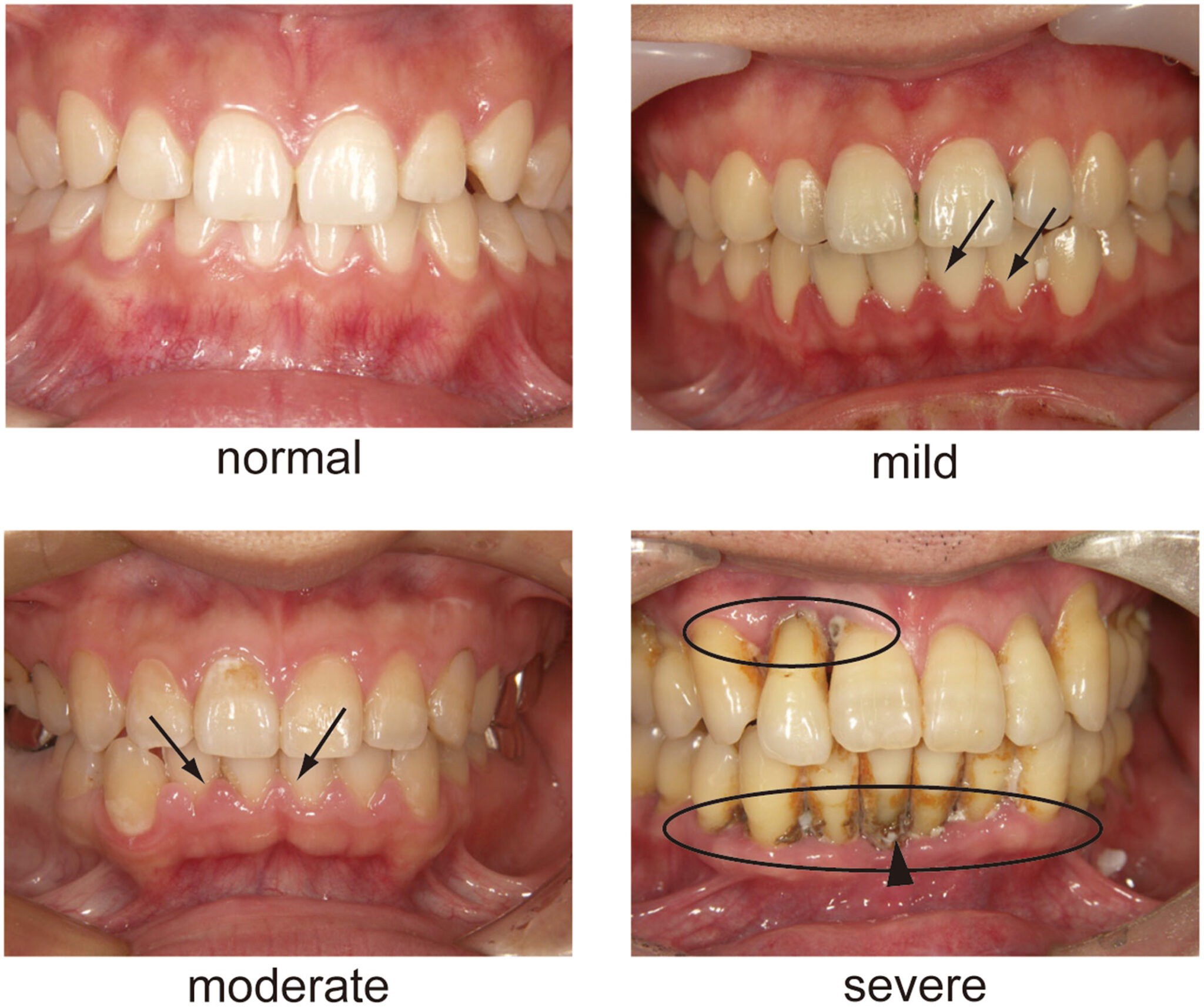Periodontal Disease: Symptoms, Causes, Treatment
What are the symptoms of periodontal disease?
Periodontal disease, also known as gum disease, is a common condition that affects the tissues and bone that support the teeth. It is caused by the bacteria in plaque, a sticky film that forms on the teeth.
The symptoms of periodontal disease can vary depending on the stage of the disease, but common symptoms include:
- Swollen or red gums: In the early stages of periodontal disease, the gums may become swollen and red.
- Gum recession: As the disease progresses, the gums may begin to pull away from the teeth, leading to gum recession.
- Gum bleeding: Gums that bleed easily, especially when brushing or flossing, can be a sign of periodontal disease.
- Bad breath: Persistent bad breath that is not resolved with regular brushing and flossing can be a symptom of periodontal disease.
- Pain or sensitivity: Some individuals with periodontal disease may experience pain or sensitivity in the gums.
- Pus between teeth and gums: In more advanced stages of periodontal disease, pus may develop between the teeth and gums.
- Loose or shifting teeth: As the disease progresses, the bone supporting the teeth may be damaged, leading to loose or shifting teeth.
- Changes in bite: Changes in the way the teeth come together when biting down can occur in advanced cases of periodontal disease.
- Abscesses: In severe cases, abscesses (pus-filled sacs) may form in the gums or between teeth.
It’s important to note that early-stage periodontal disease (gingivitis) may not cause any noticeable symptoms, which is why regular dental check-ups are important for early detection and treatment. If you are experiencing any of these symptoms, it’s important to see a dentist for a thorough evaluation and appropriate treatment.
What are the causes of periodontal disease?
Periodontal disease, also known as gum disease, is primarily caused by the bacteria found in plaque, a sticky film that forms on the teeth. However, several factors can contribute to the development and progression of periodontal disease. These include:
- Poor oral hygiene: Not brushing and flossing regularly allows plaque to build up on the teeth, leading to gum inflammation and periodontal disease.
- Tobacco use: Smoking or using other tobacco products increases the risk of periodontal disease.
- Genetics: Some people may be more genetically predisposed to periodontal disease than others.
- Certain medications: Some medications can increase the risk of gum disease, such as medications that reduce saliva flow or medications that cause gum overgrowth.
- Hormonal changes: Hormonal changes, such as those that occur during puberty, pregnancy, and menopause, can make gums more sensitive and prone to gum disease.
- Certain diseases: Diseases such as diabetes, cancer, and HIV/AIDS can weaken the immune system and increase the risk of gum disease.
- Poor nutrition: A diet lacking in essential nutrients can weaken the immune system and make it harder for the body to fight off gum infections.
- Stress: Stress can weaken the immune system and make it harder for the body to fight off infections, including gum infections.
- Grinding or clenching teeth: These habits can put excess force on the teeth and gums, leading to gum recession and periodontal disease.
- Crooked teeth: Crooked teeth can make it harder to clean between teeth, increasing the risk of gum disease.
It’s important to practice good oral hygiene, including brushing and flossing regularly, to reduce the risk of developing periodontal disease. Regular dental check-ups are also important for early detection and treatment of gum disease.
What is the treatment for periodontal disease?
The treatment for periodontal disease, also known as gum disease, depends on the severity of the disease. In general, treatment aims to control the infection, reduce inflammation, and prevent further damage to the gums and bone that support the teeth. Common treatments for periodontal disease include:
- Scaling and root planing: This is a deep cleaning procedure that removes plaque and tartar from the surfaces of the teeth and roots. It also smooths the root surfaces to remove bacteria and promote healing.
- Antibiotics: Antibiotics may be prescribed to help control bacterial infection. They can be taken orally or applied directly to the gums.
- Surgical treatments: In more advanced cases of periodontal disease, surgical treatments may be necessary. These can include flap surgery, where the gums are lifted back to remove tartar, and bone grafts, where bone is replaced or regenerated around the teeth.
- Laser therapy: Some dentists use lasers to remove diseased tissue and bacteria from the gums. Laser therapy can be less invasive than traditional surgery and may promote faster healing.
- Lifestyle changes: Quitting smoking, improving diet, and managing stress can help improve overall oral health and reduce the risk of gum disease.
- Regular dental cleanings: Regular dental cleanings and check-ups are essential for maintaining healthy gums and preventing gum disease.
It’s important to seek treatment for periodontal disease as soon as possible to prevent further damage to the gums and teeth. Untreated gum disease can lead to tooth loss and other serious health problems. Your dentist can recommend the best treatment plan for your individual needs.
See also: Gingivitis




